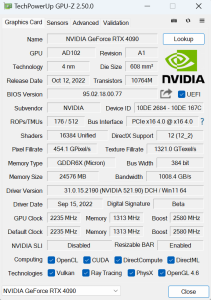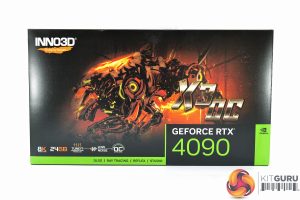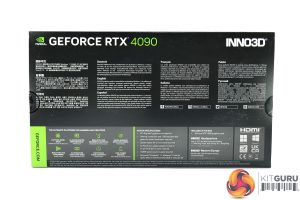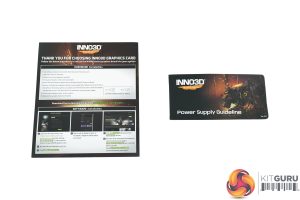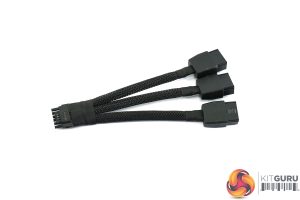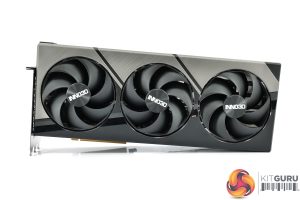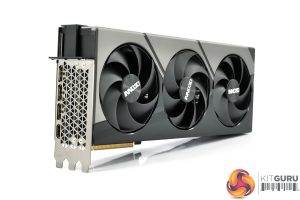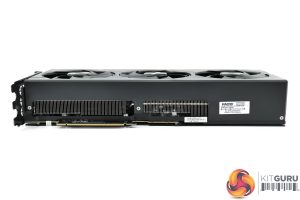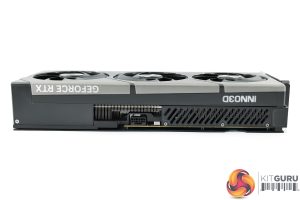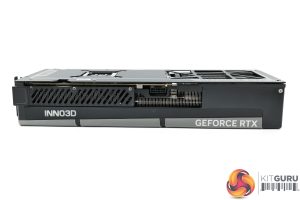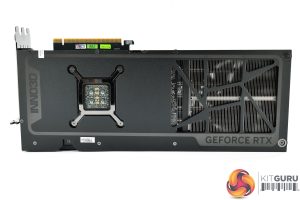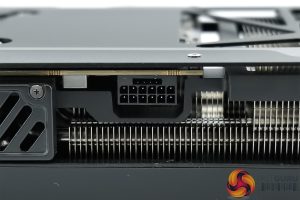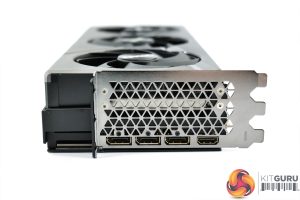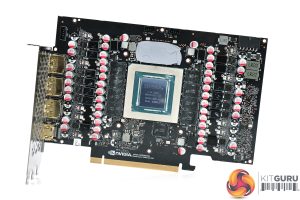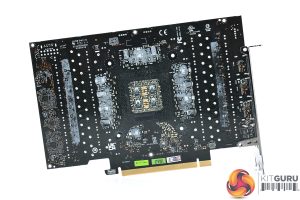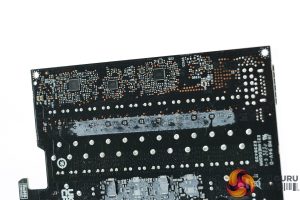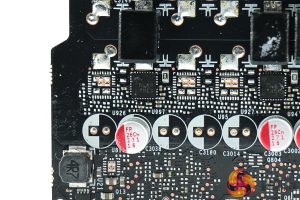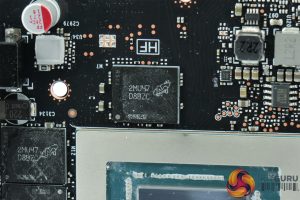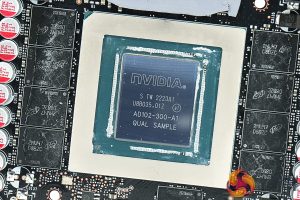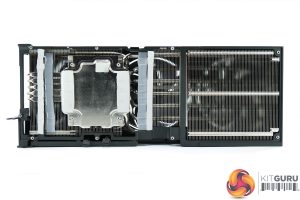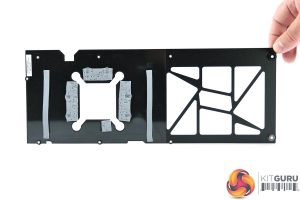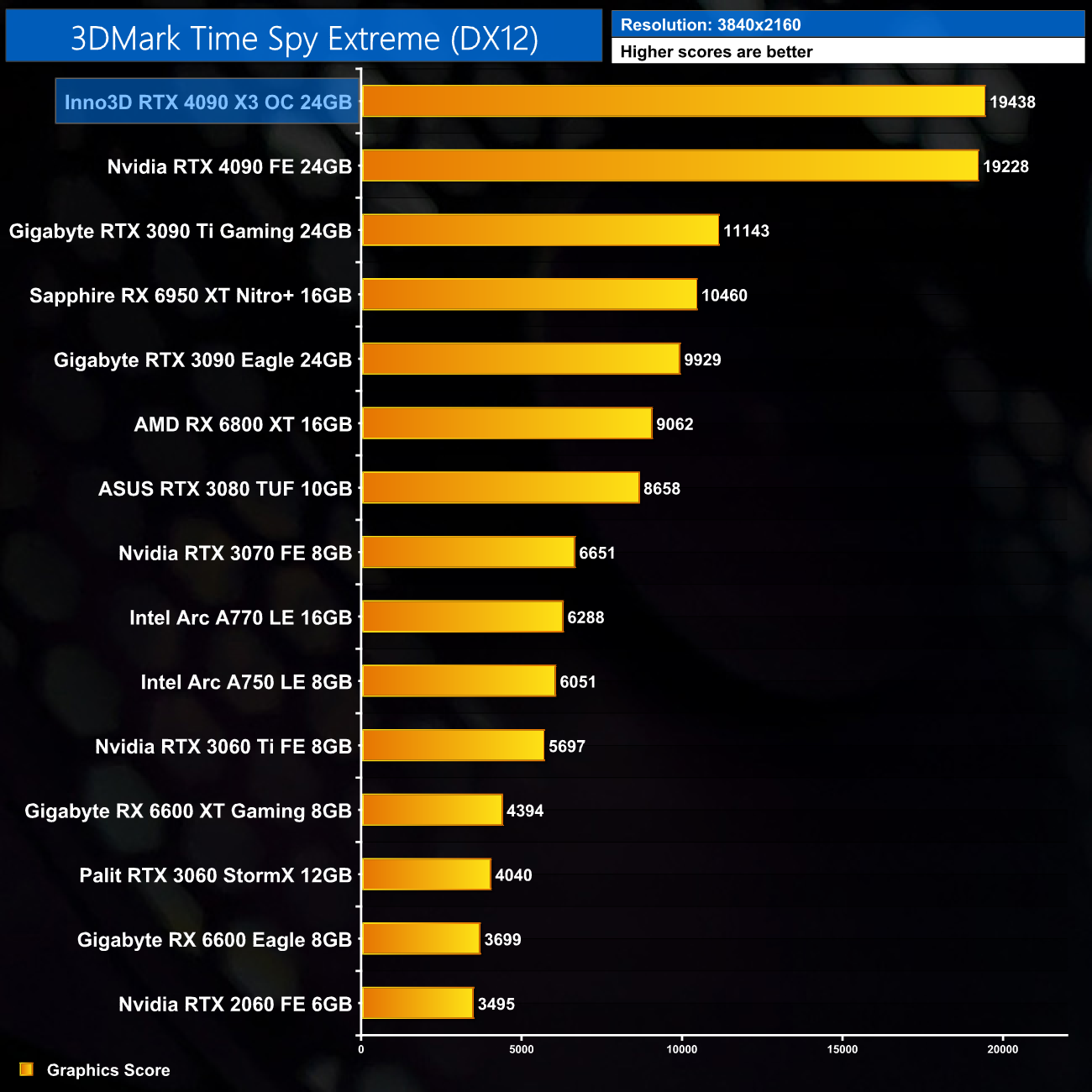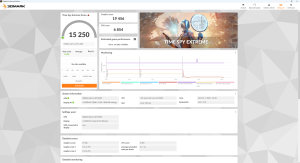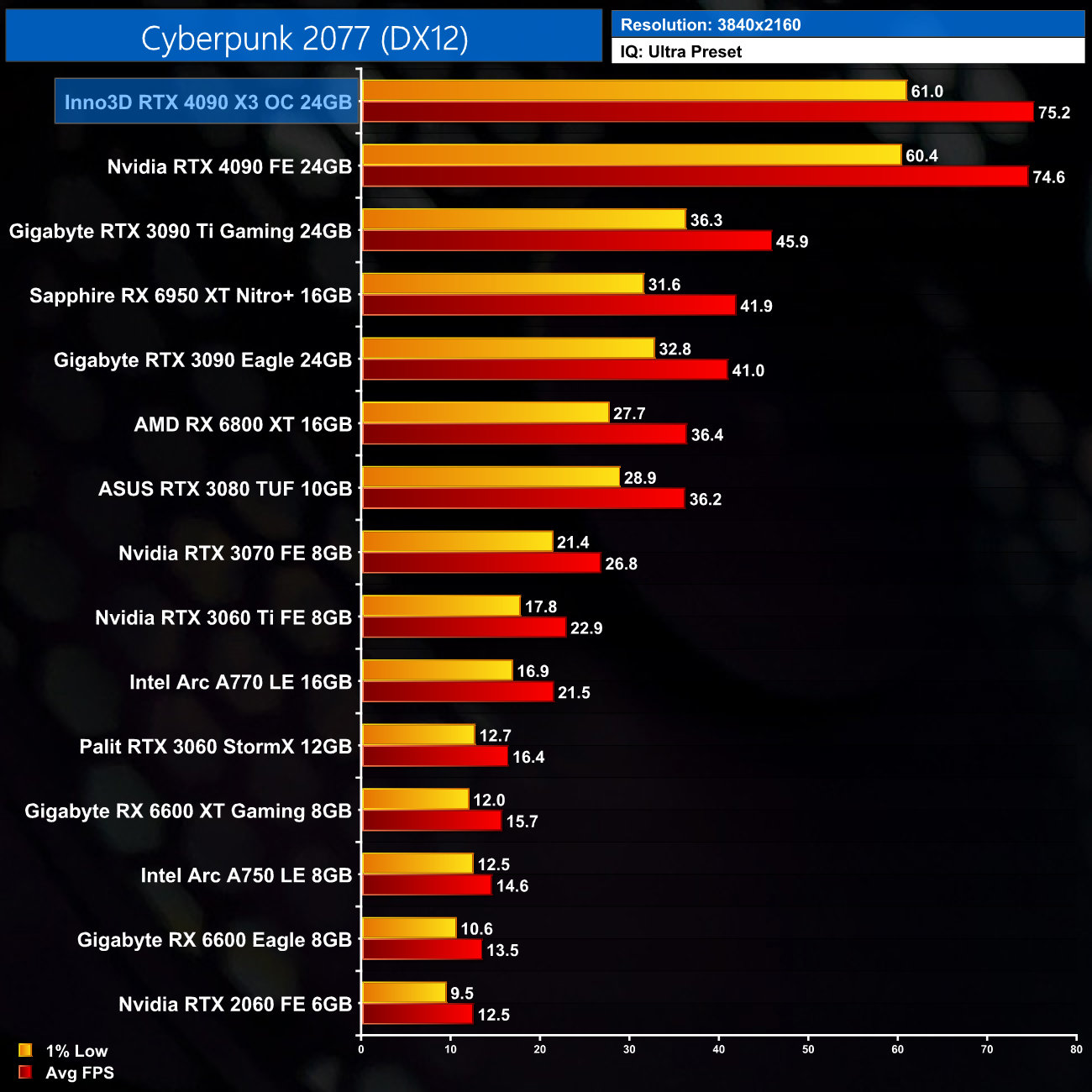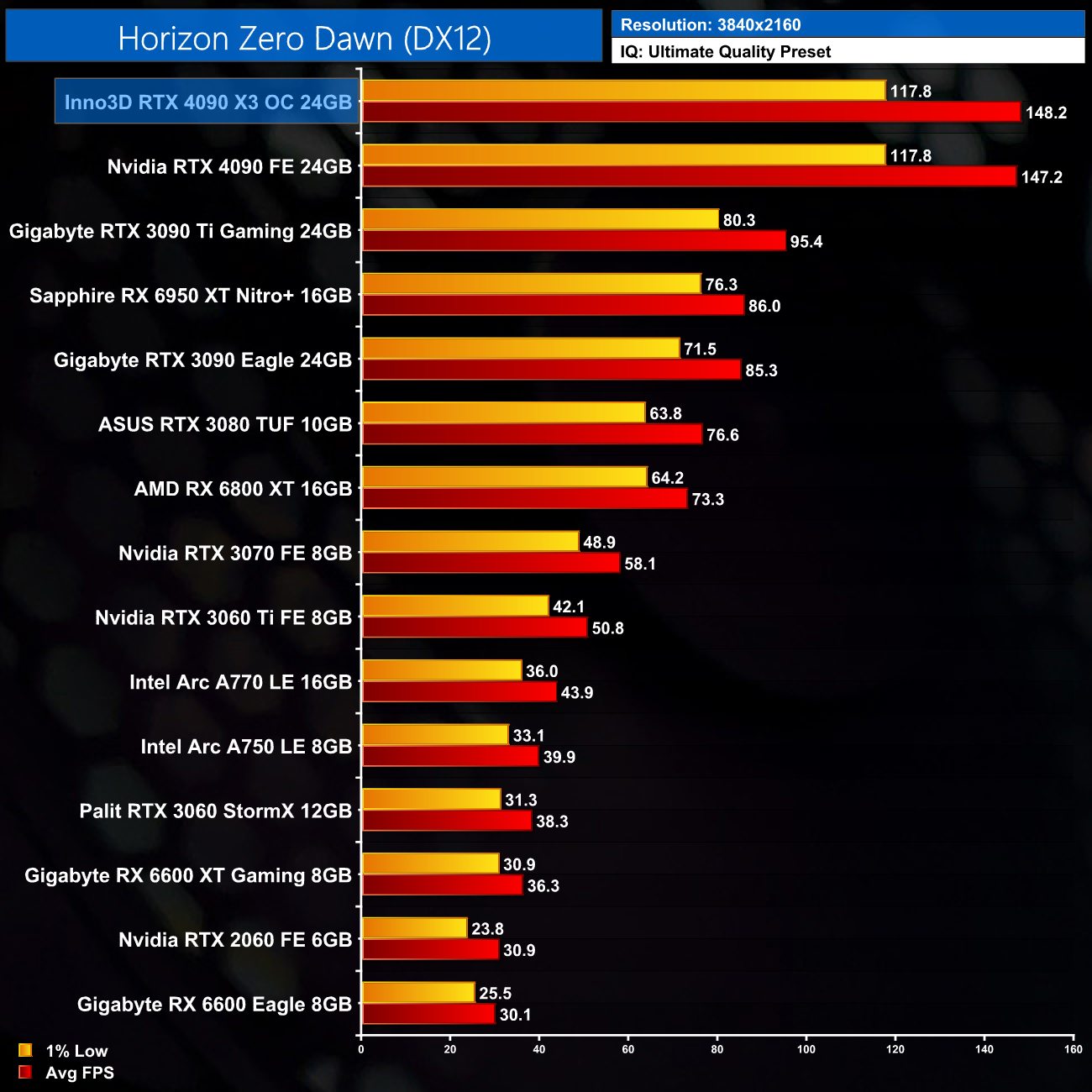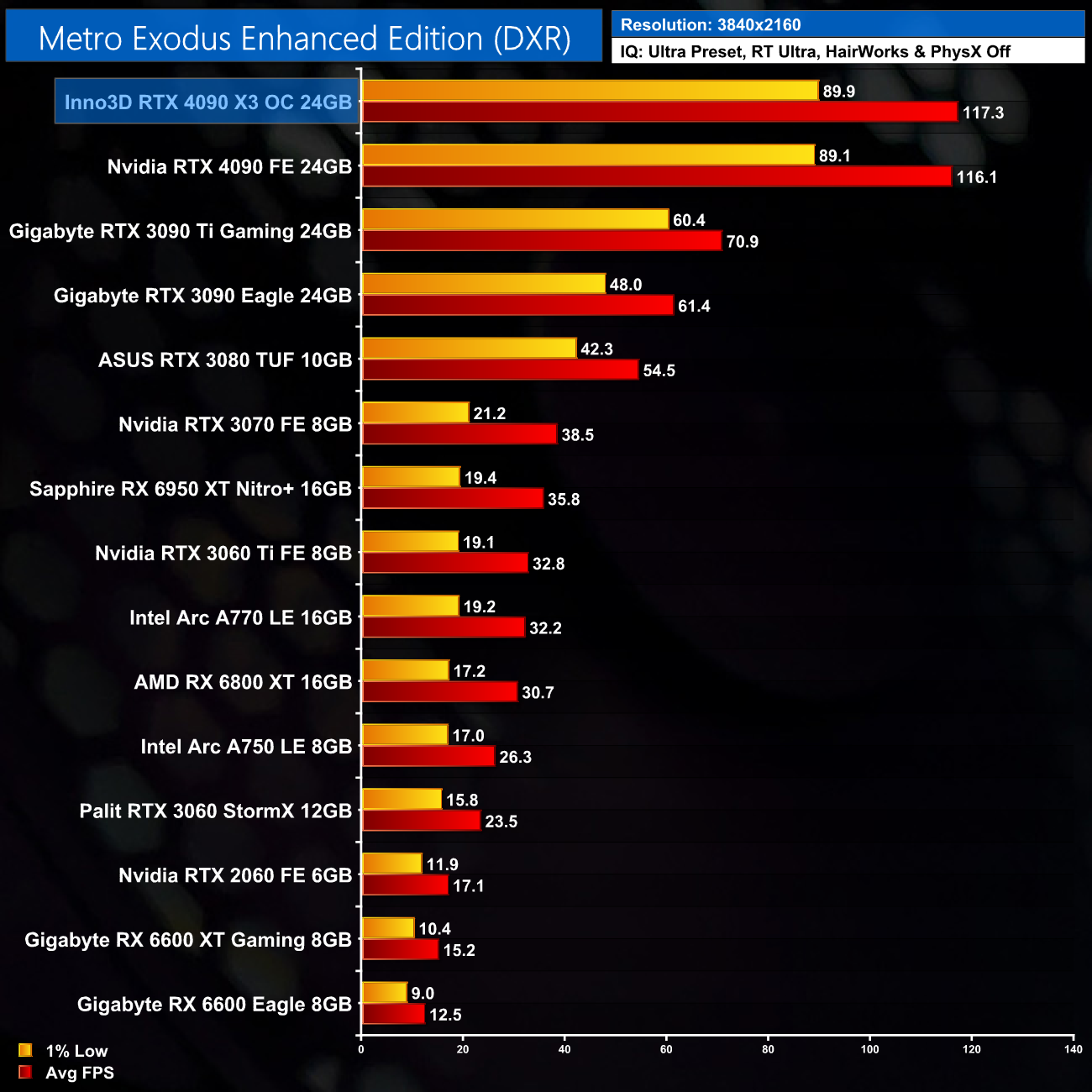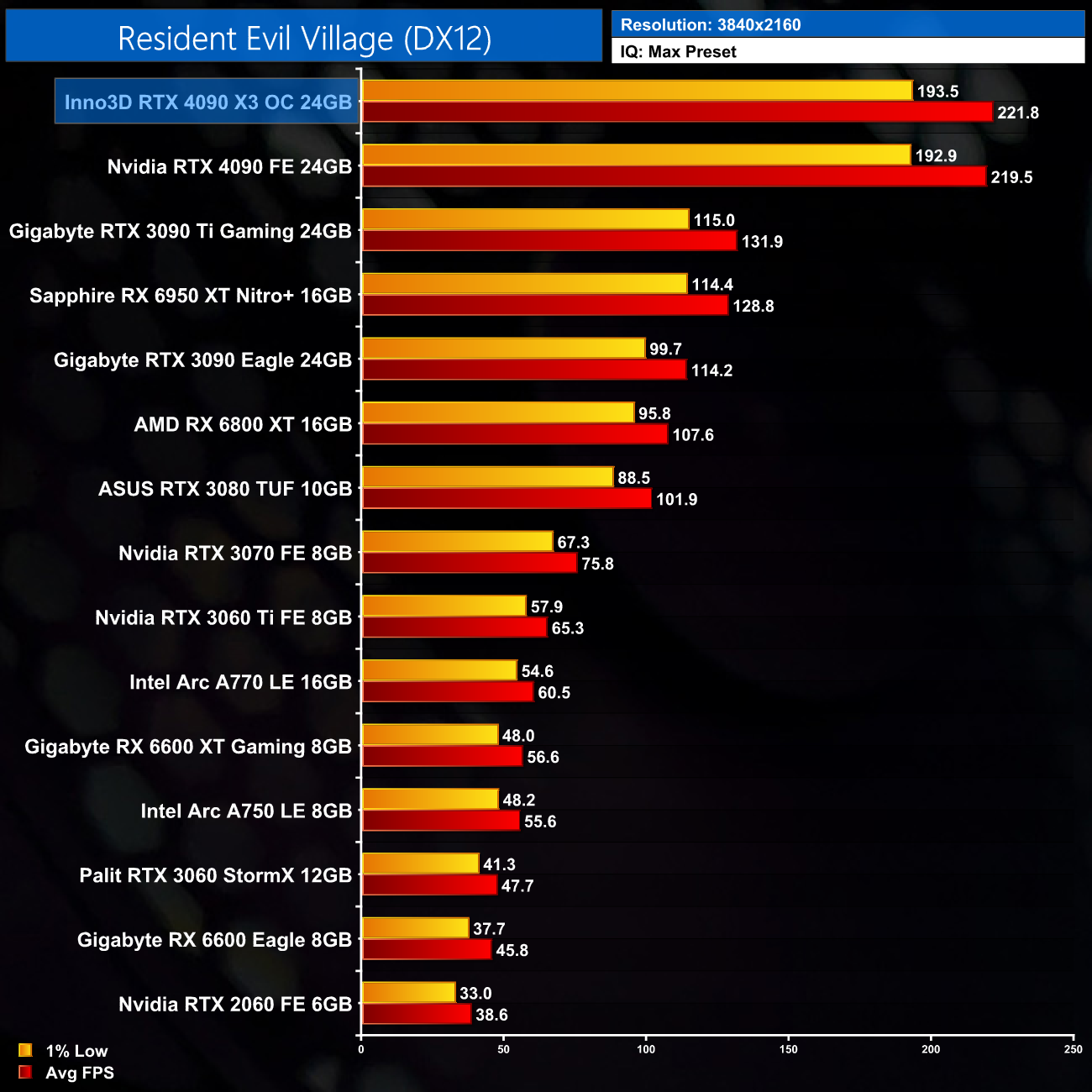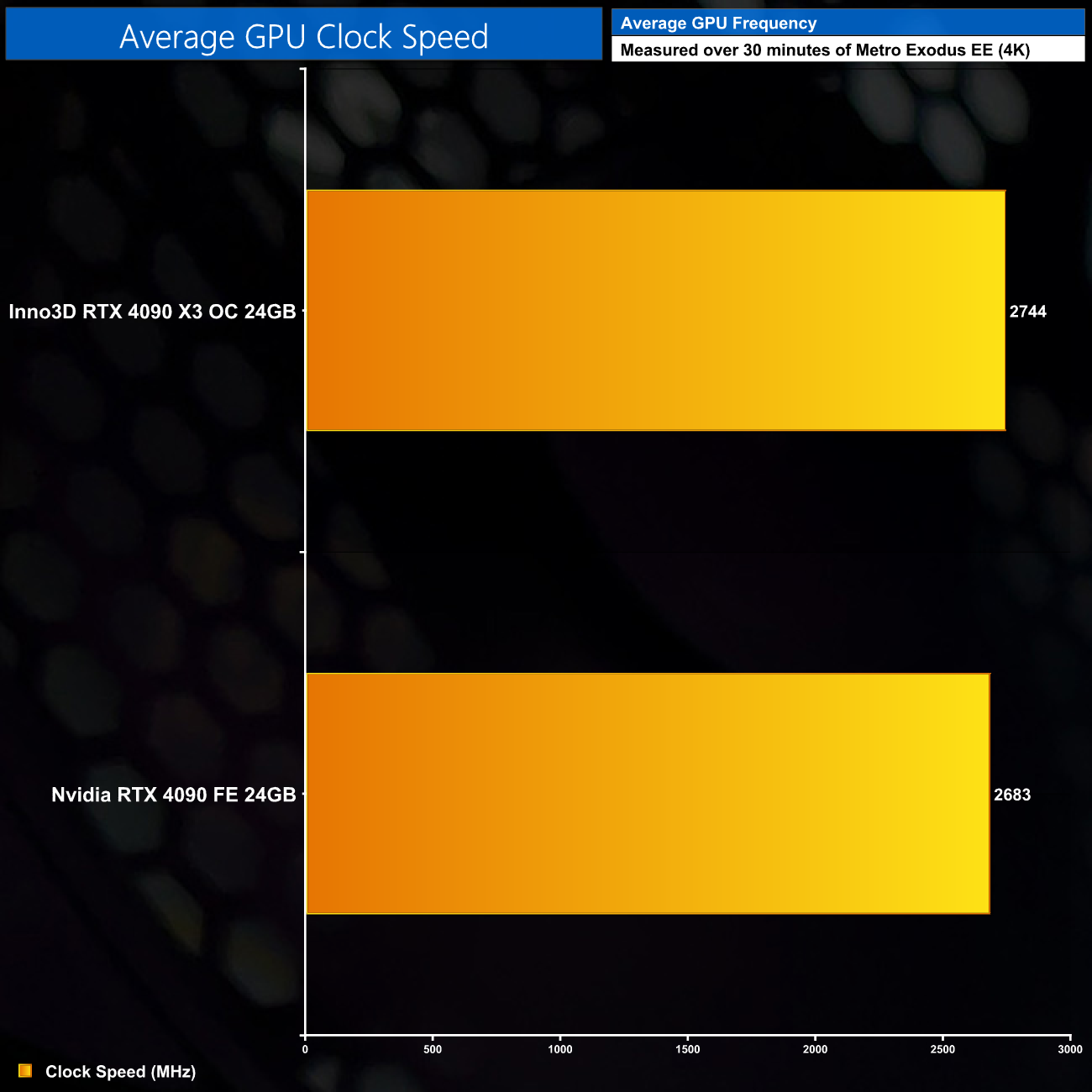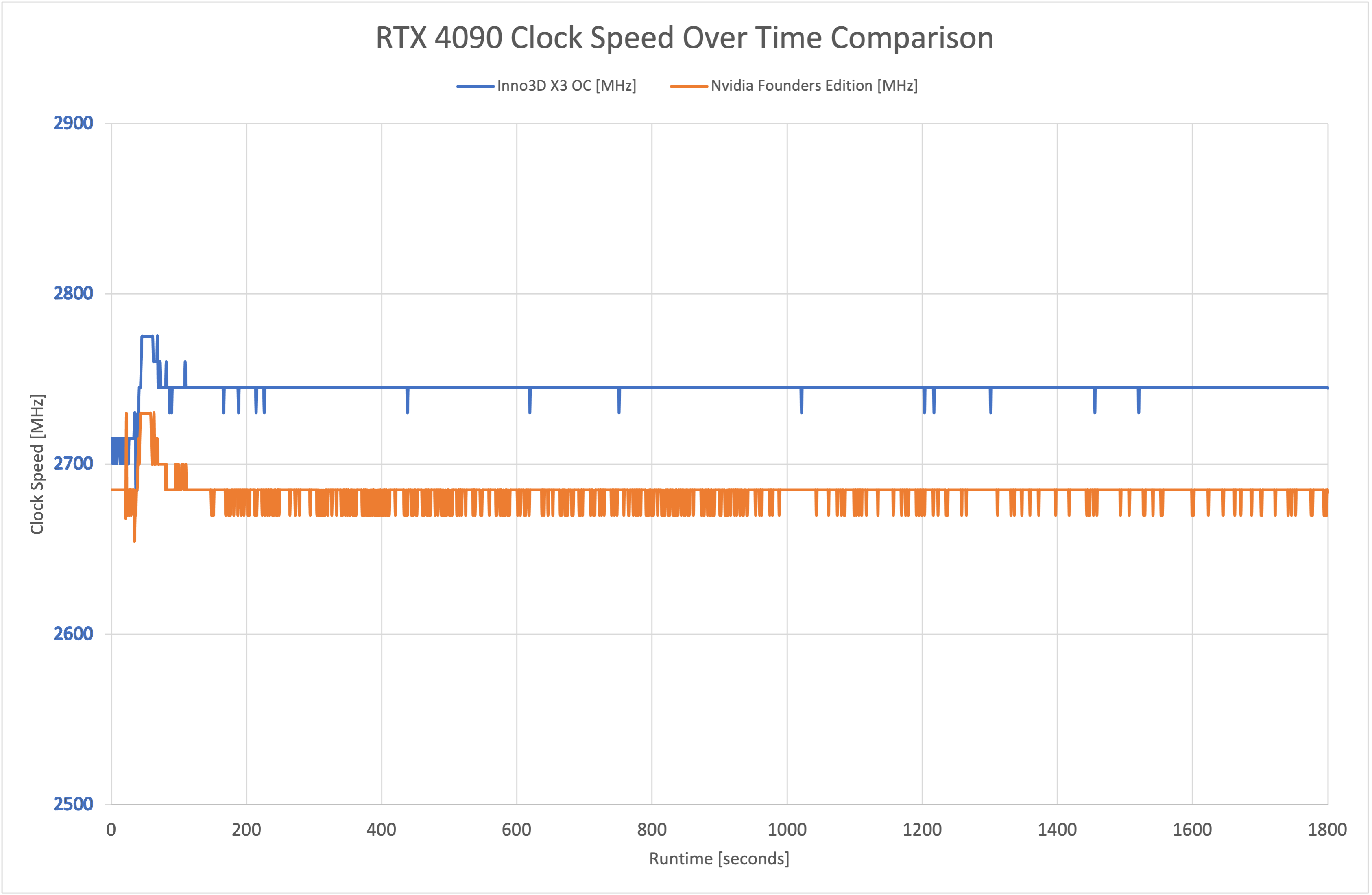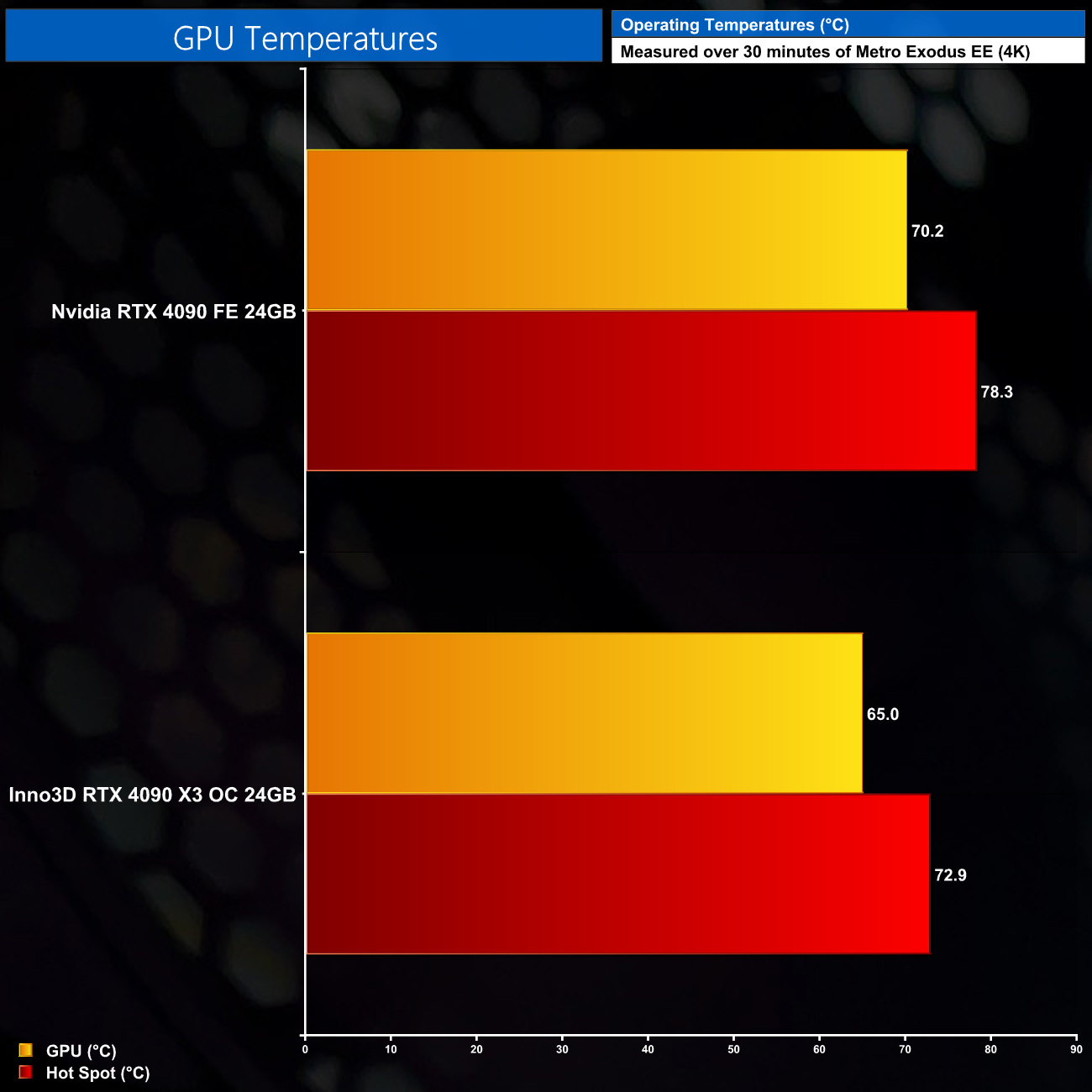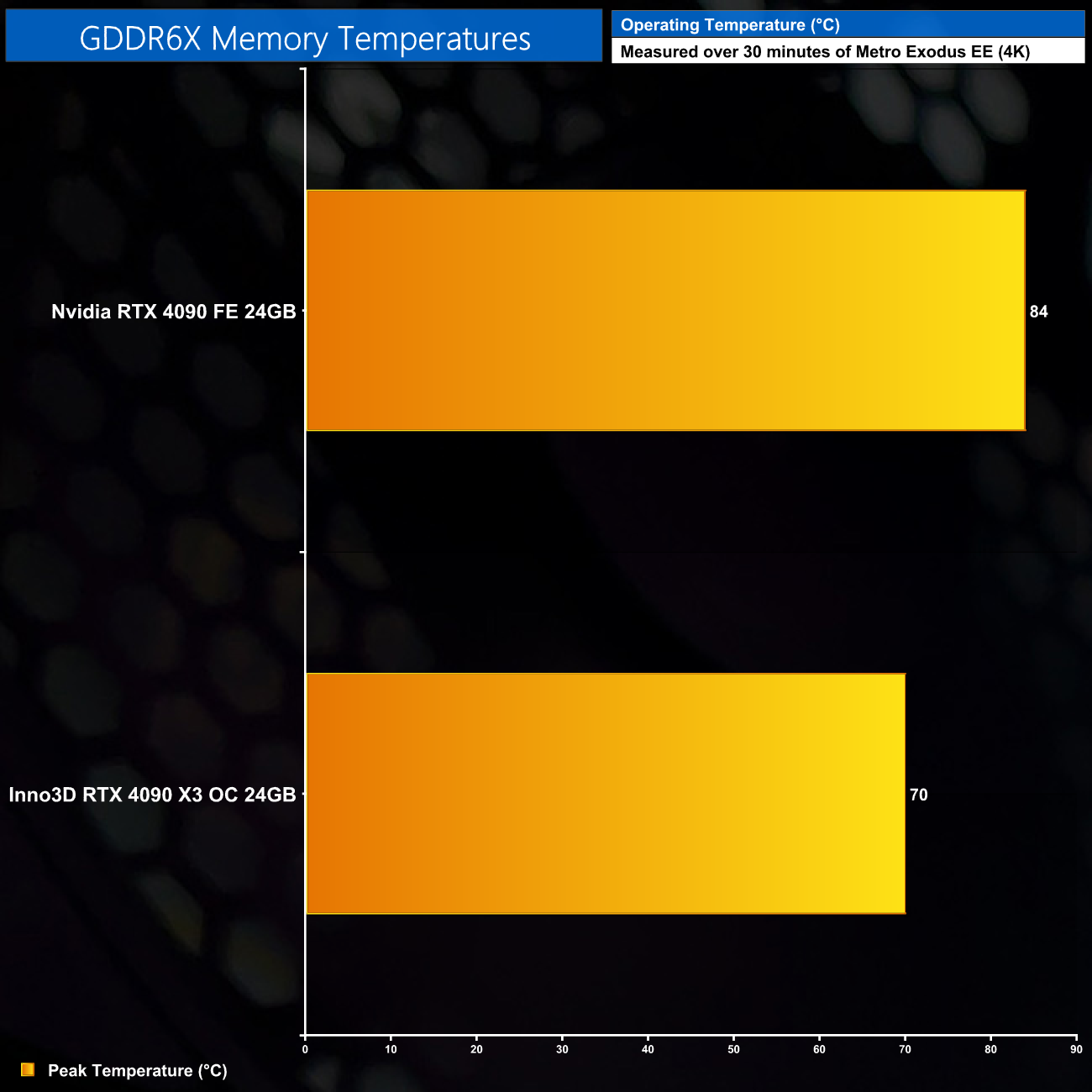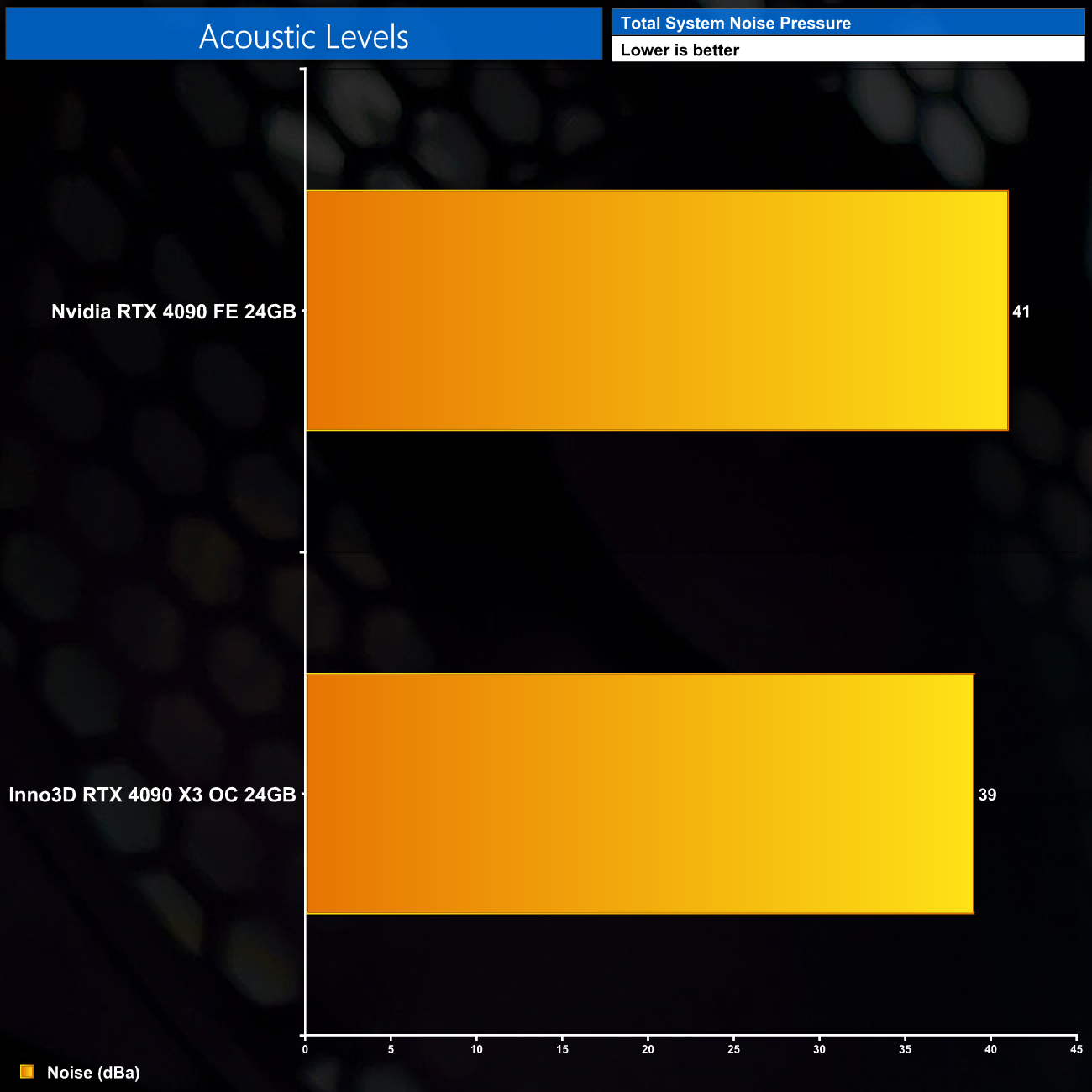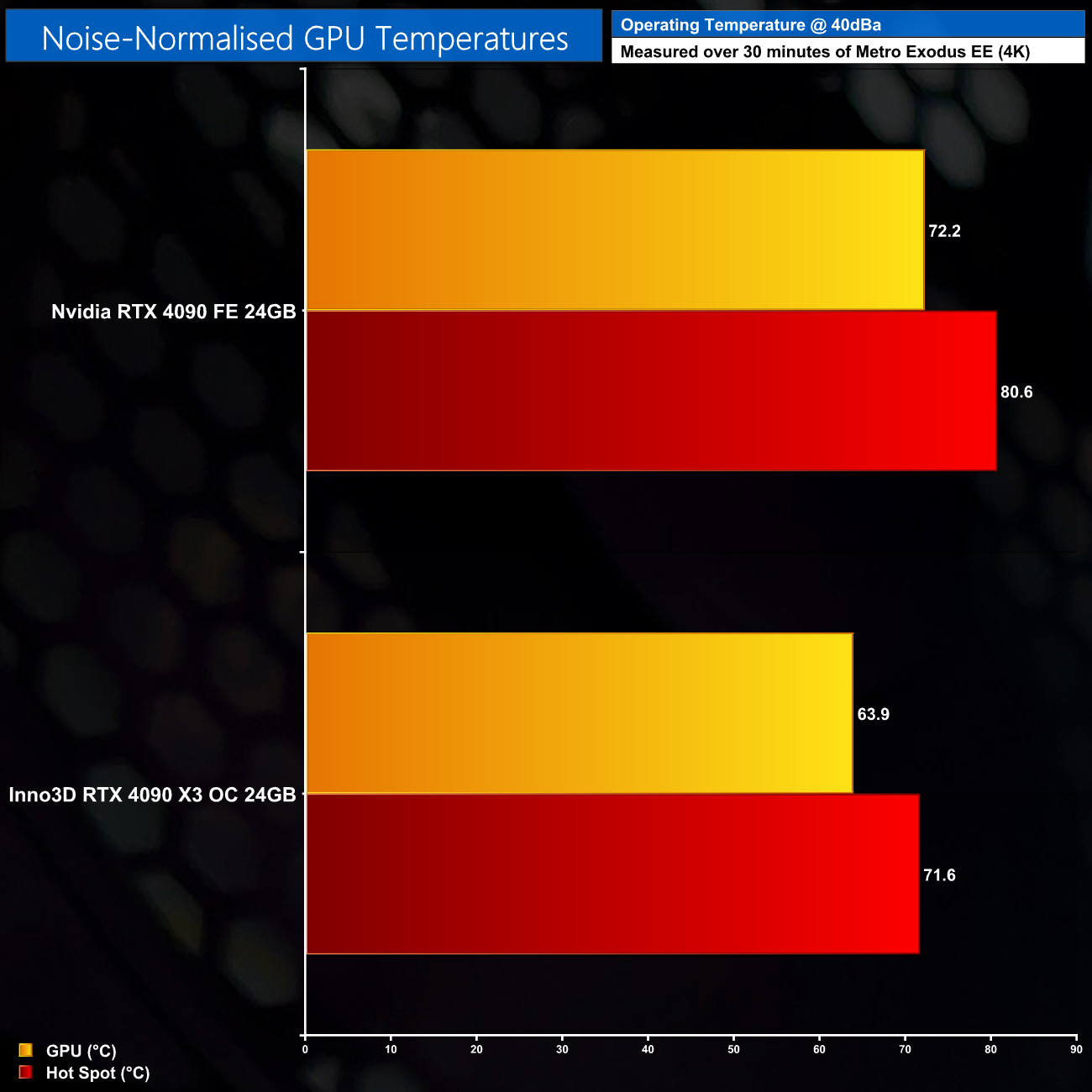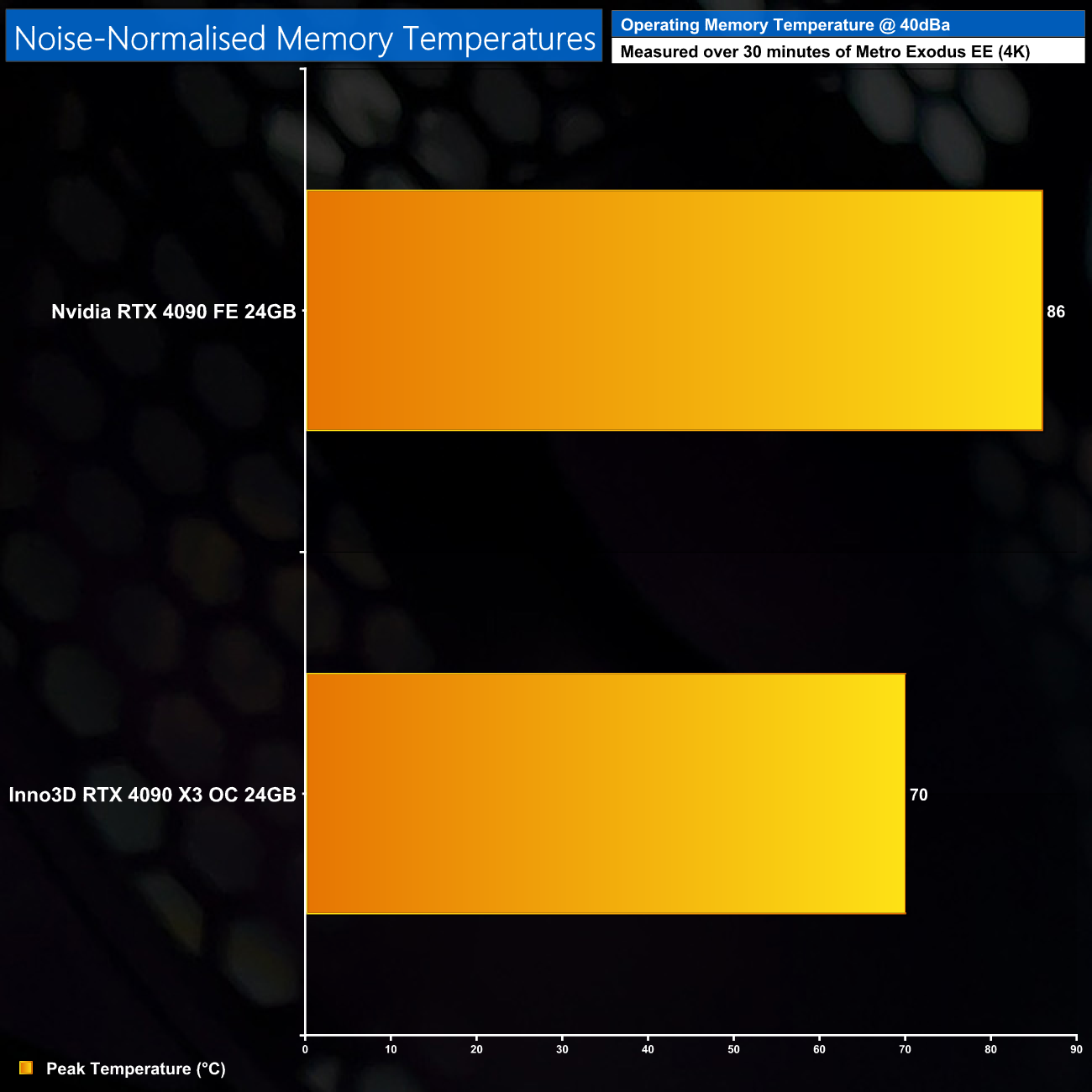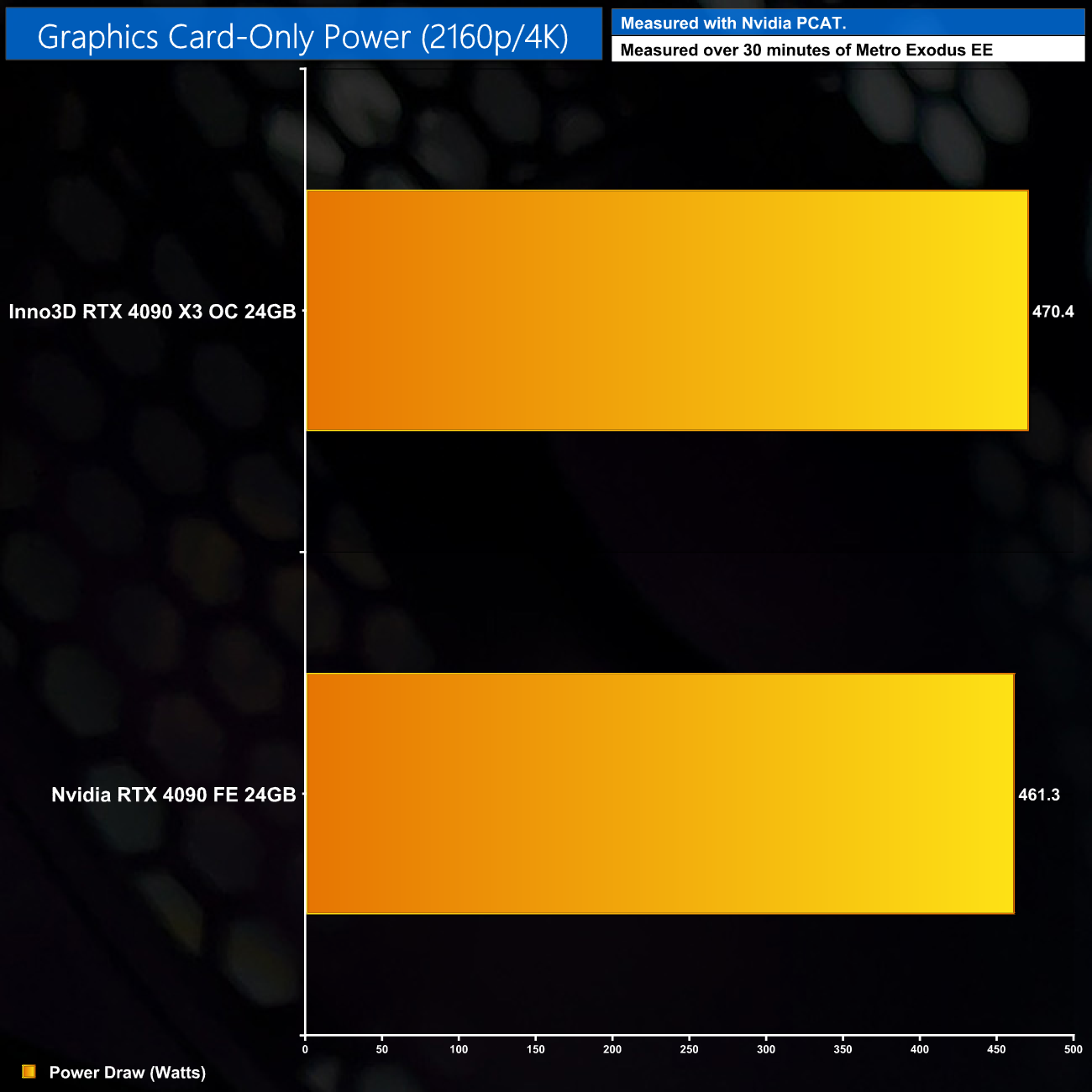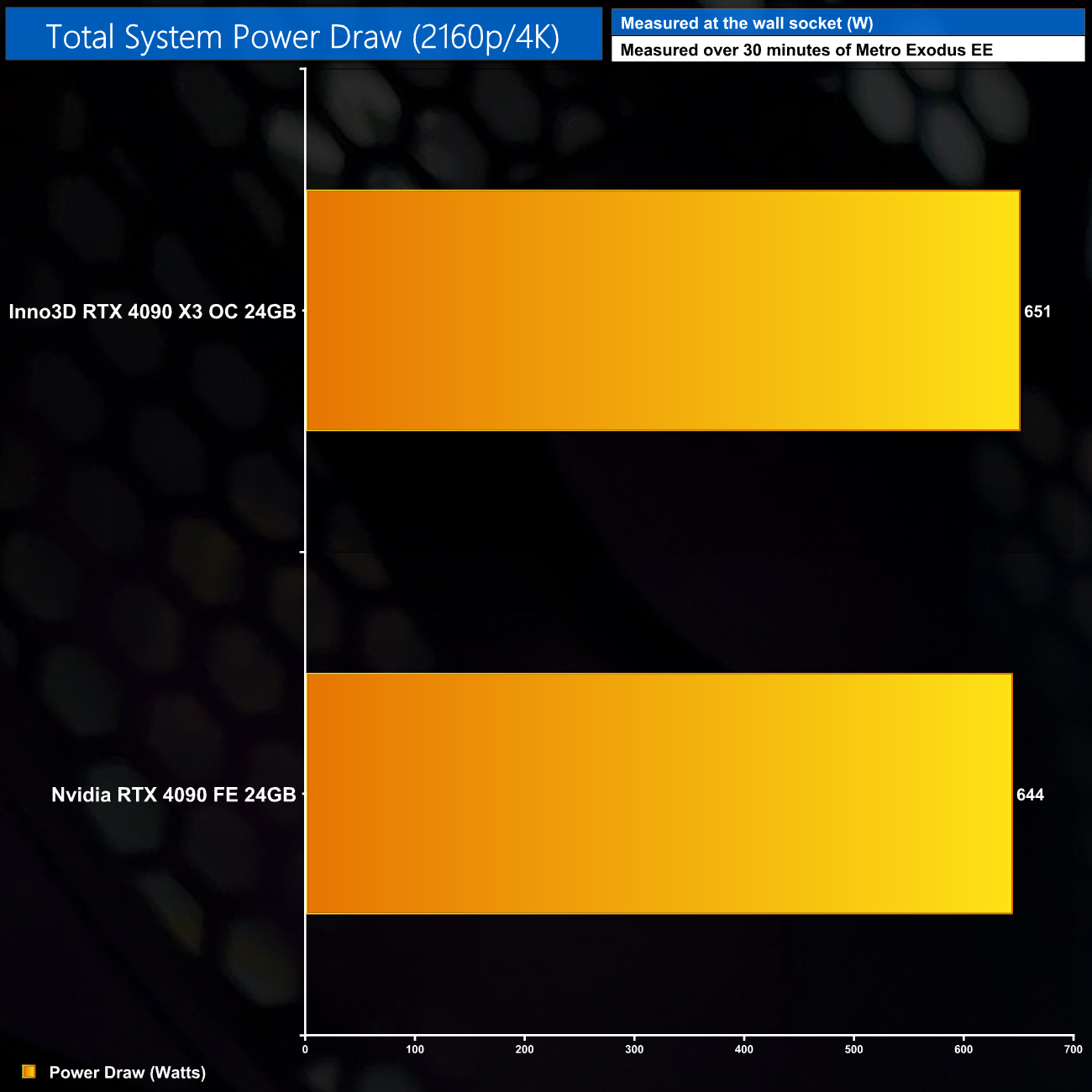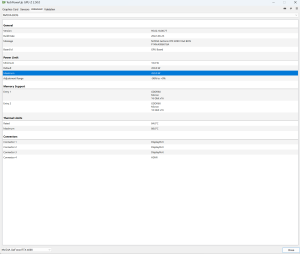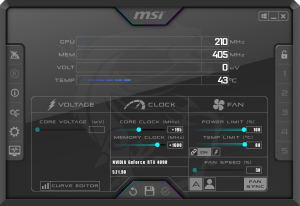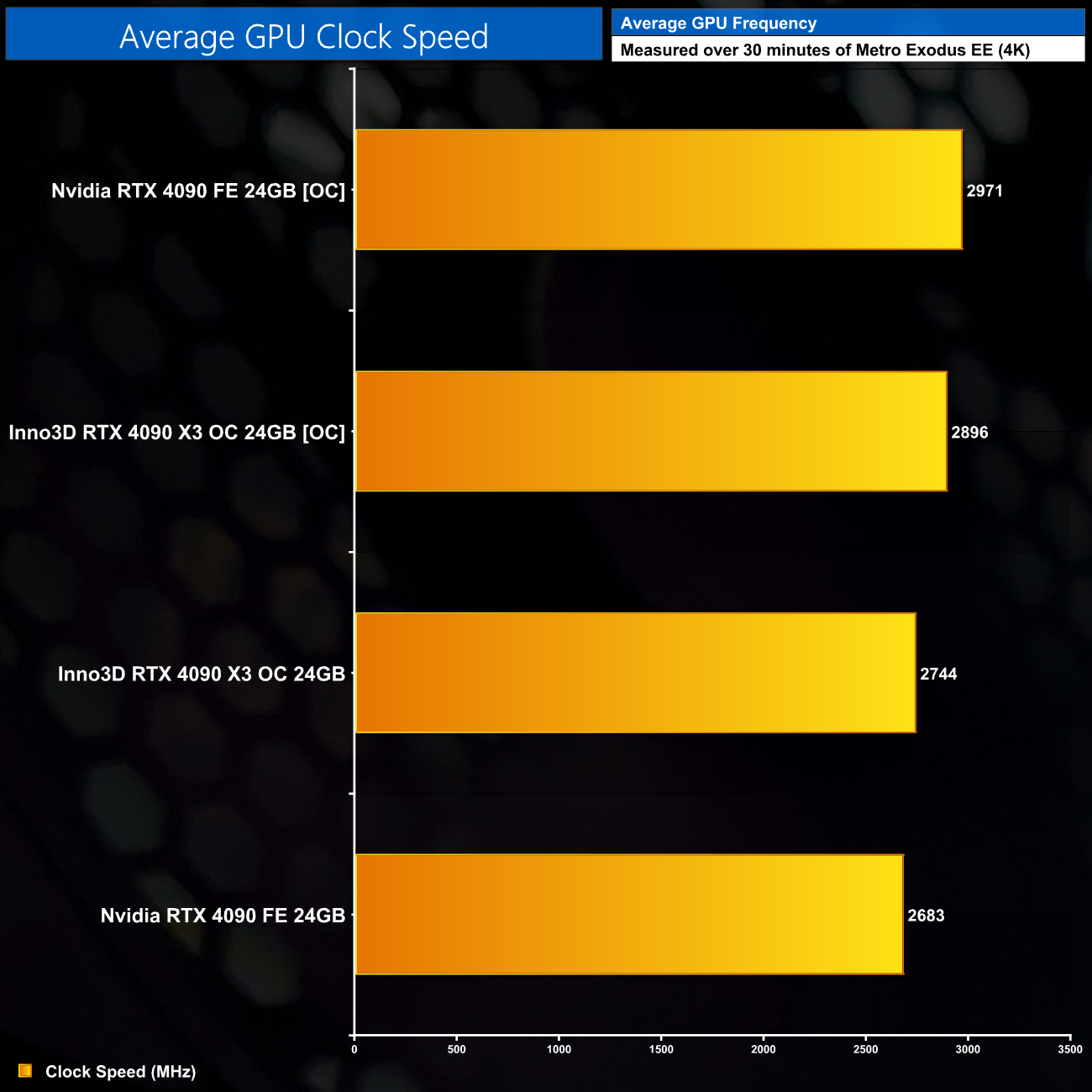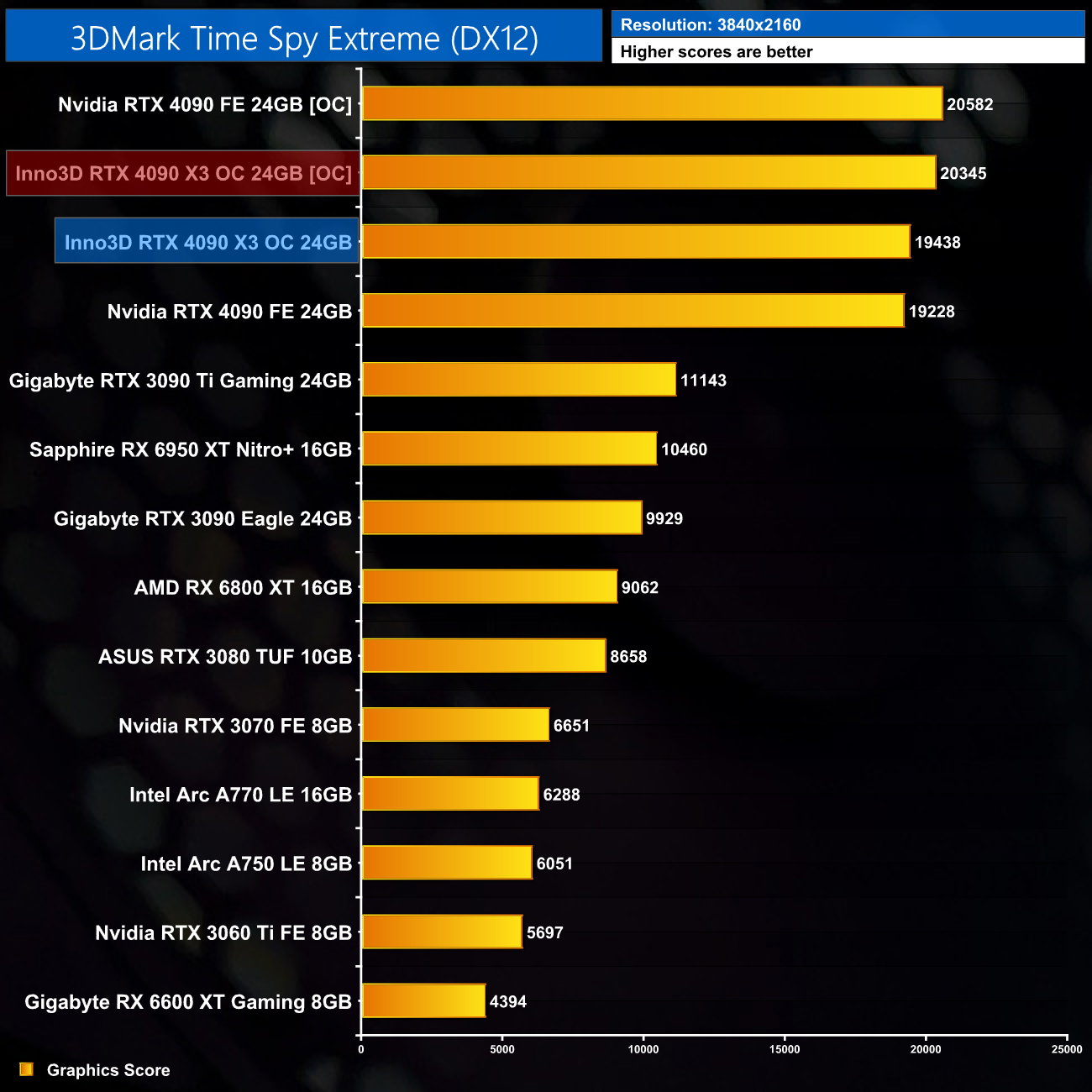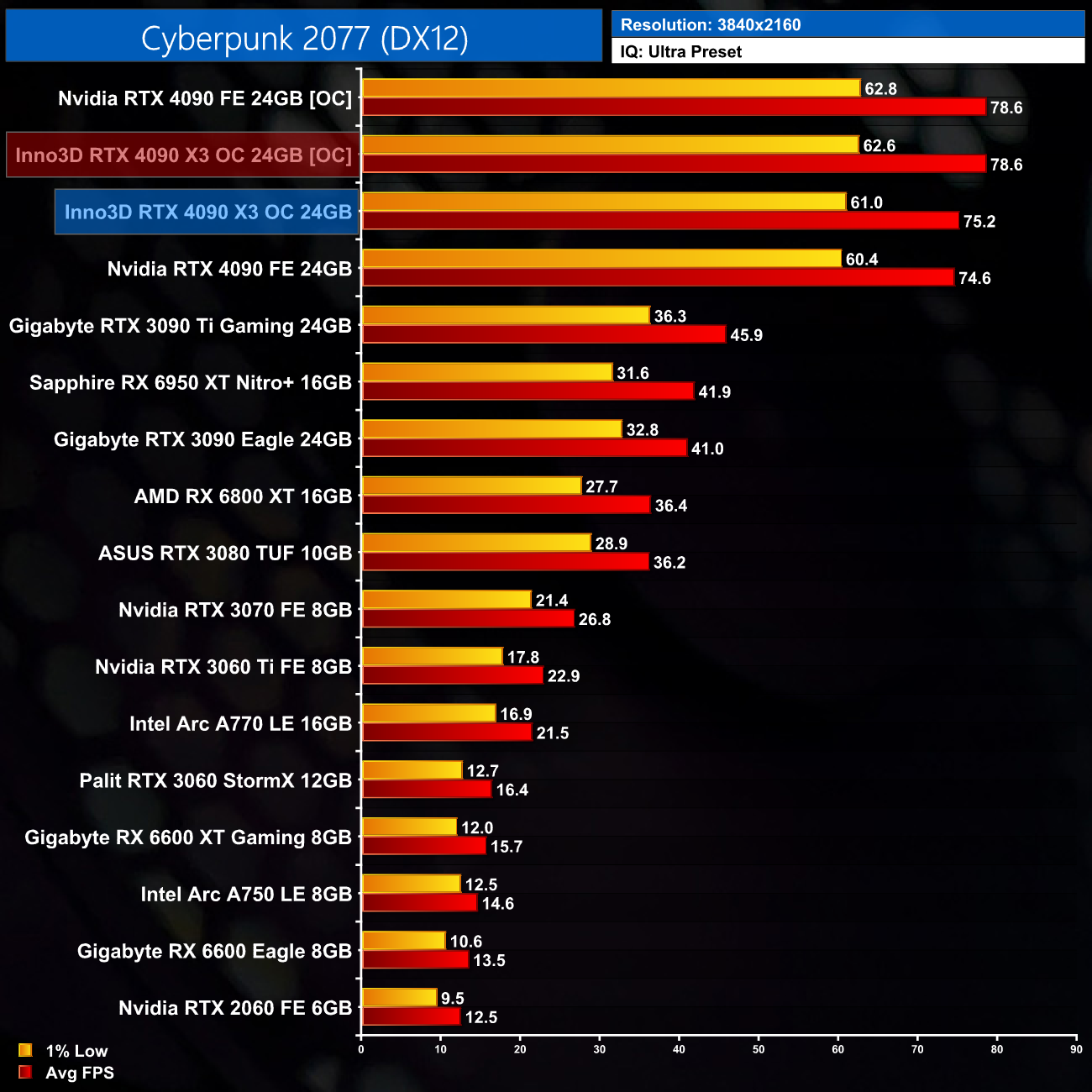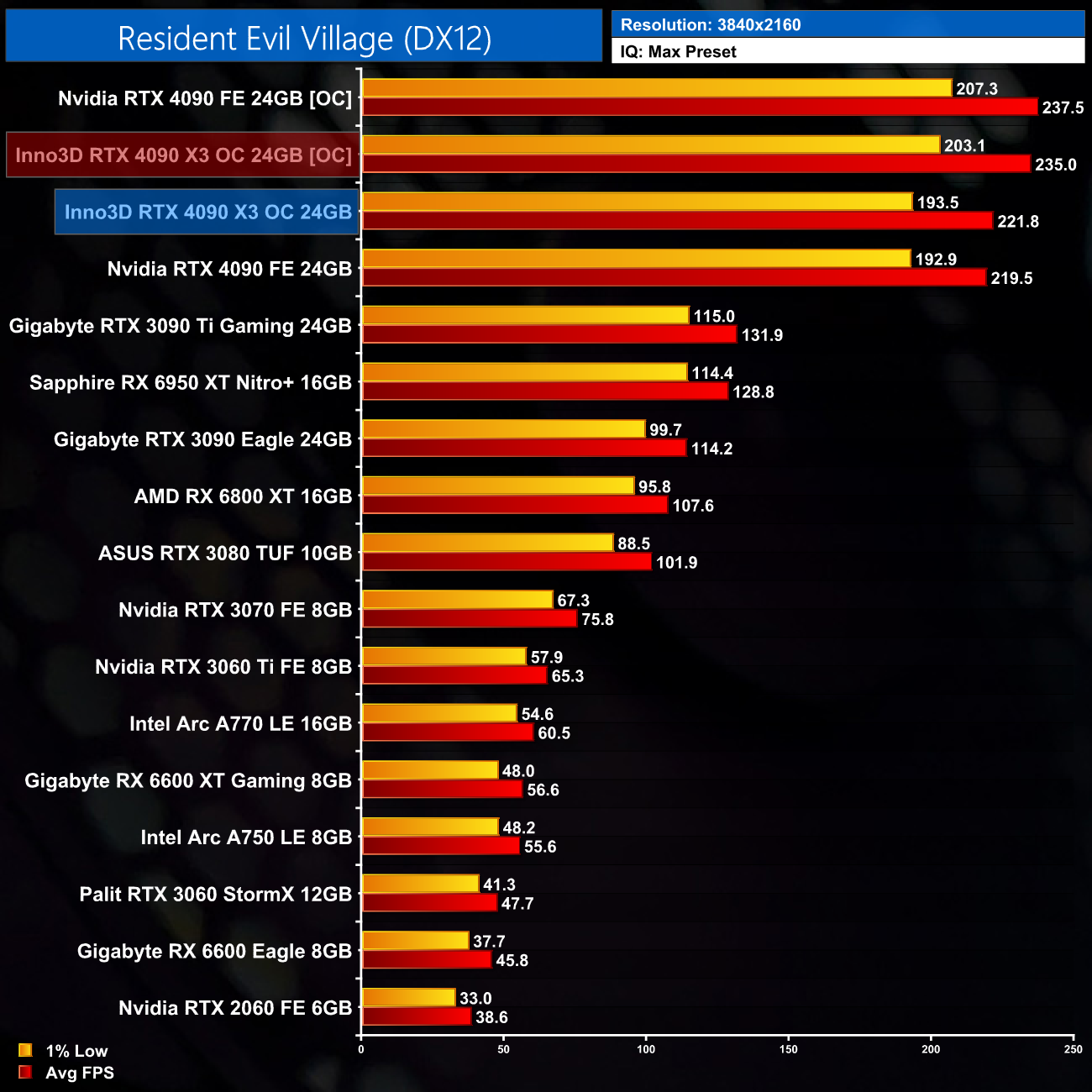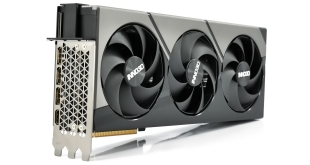
As this review goes live, RTX 4090 has launched at retail. Yesterday we presented our in-depth review of Nvidia's Founders Edition and today we are getting hands on with our first AIB card. Specifically, we are assessing the Inno3D RTX 4090 X3 OC, packing a triple-slot cooler, vapour chamber, and a small 30MHz factory overclock. How does it compare against Nvidia's design? That's what we find out today.
The Inno3D RTX 4090 is perhaps not the flashiest AIB card that is hitting shelves today, nor does it offer features like dual-BIOS or an unlocked power limit. Instead, the focus is on the card's cooler, which hopefully will offer decent improvements over the Founders Edition.
Inno3D also told us that this card is targeting Nvidia's baseline MSRP, so it should be available at $1599, or £1699 for those of us in the UK. If you just want a solid card without all the fancy bells and whistles that drive up the price, is this a viable contender for your money?
| RTX 4090 | RTX 3090 Ti | RTX 3090 | RTX 3080 Ti | RTX 3080 | |
| Process | TSMC 4N | Samsung 8N | Samsung 8N | Samsung 8N | Samsung 8N |
| SMs | 128 | 84 | 82 | 80 | 68 |
| CUDA Cores | 16384 | 10752 | 10496 | 10240 | 8704 |
| Tensor Cores | 512 | 336 | 328 | 320 | 272 |
| RT Cores | 128 | 84 | 82 | 80 | 68 |
| Texture Units | 512 | 336 | 328 | 320 | 272 |
| ROPs | 176 | 112 | 112 | 112 | 96 |
| GPU Boost Clock | 2520 MHz | 1860 MHz | 1695 MHz | 1665 MHz | 1710 MHz |
| Memory Data Rate | 21 Gbps | 21 Gbps | 19.5 Gbps | 19 Gbps | 19 Gbps |
| L2 Cache | 73729 KB | 6144 KB | 6144 KB | 6144 KB | 5120 KB |
| Total Video Memory | 24GB GDDR6X | 24GB GDDR6X | 24GB GDDR6X | 12GB GDDR6X | 10GB GDDR6X |
| Memory Interface | 384-bit | 384-bit | 384-bit | 384-bit | 320-bit |
| Memory Bandwidth | 1008 GB/Sec | 1008 GB/Sec | 936 GB/Sec | 912 GB/Sec | 760 GB/Sec |
| TGP | 450W | 450W | 350W | 350W | 320W |
First, for a quick spec recap. Fabbed on TSMC's 4nm node has allowed Nvidia to vastly increase transistor count, up from 28.3 billion with GA102, to a staggering 76.3 billion with the largest Ada GPU, AD102. Accordingly, core count has gone through the roof, with the RTX 4090 home to 16384 CUDA cores, with 512 Tensor cores and 128 RT cores, with a sizeable increase to the ROP count too, up to 176.
Such a leap forward in process node has also allowed Nvidia to crank the clock speed significantly, with the RTX 4090 now sporting a 2520MHz rated boost clock. The Inno3D X3 OC we are reviewing today has tweaked that further, adding an extra 30MHz out of the box.
Memory configuration is almost identical to the RTX 3090 Ti, with 24GB GDDR6X running at 21Gbps, operating over a 384-bit interface, totalling memory bandwidth of just over 1TB/s. That said, there has been a substantial upgrade to the L2 cache with the Ada architecture, with the RTX 4090 now offering 73MB, compared to 6MB for GA102.
Power draw also remains at 450W, as per the RTX 3090 Ti, and Inno3D has not increased this for the X3 OC.
The Inno3D RTX 4090 OC ships in a black box, with an eye-catching piece of box art depicting some sort of aggressive-looking robot. On the back, various key features and specifications are highlighted.
Inside, we find two small bits of documentation – one is a quick-start guide, and the other a PSU guide which details what wattage you need depending on the exact GPU in question.
Speaking of wattage, it's interesting that Inno3D includes a 3x 8-pin to 12VHPWR adapter, instead of the 4x 8-pin adapter that ships with the Founders Edition. This has direct implications for overclocking, as we will see later in the review, but the 3x 8-pin adapter is still sufficient for the card's default 450W power limit, so this doesn't affect out of the box performance.
As for the overall design, the X3 OC is a pretty conventional-looking graphics card, though that’s not necessarily a bad thing. It is perhaps a touch disappointing that the shroud is made entirely of plastic considering the price, but it still feels reasonably solid in the hand and I like the visual contrast between the black and grey brushed-finished sections.
The three fans each measure 98mm in diameter, with a total of seven fan blades, so they’re a decent size – if not quite as large as the 120mm spinners on the Founders Edition. Inno3D also emphasises the fact that the central fan spins in reverse, relative to the outer two fans, something we’ve seen before from various Gigabyte graphics cards, and this should reduce overall airflow turbulence, increasing the airflow pressure down onto the heatsink itself.
As for overall dimensions, this is a big card – but we'd expect the same from any RTX 4090. The X3 OC is a touch longer than the Founders Edition, measuring in at 336 x 145mm, while it’s also triple-slot thickness. It is just a touch lighter than the Founders though, weighing in just under 1.8KG, compared to about 2.18KG of the FE.
The side of the card is home to the GeForce RTX branding, as well as an Inno3D logo towards the I/O bracket. This is illuminated by white LEDs once powered on, but note there is no RGB lighting on this card. The white LEDs can't even be turned off, though whether or not that is a problem is going to be personal preference.
It’s good to see a full-length metal backplate here, which is mostly black but with a dark grey pattern that runs around the edge of the card. It’s impossible to miss the absolutely massive cut-out in the backplate as well, a common feature that simply allows better heat dissipation from the cooler.
I also noticed a small cut-out in the backplate towards the I/O bracket, something that makes me wonder if Inno3D is reusing the backplate on this card from somewhere else. I say that as we’d typically expect a dual-BIOS switch to be positioned here, but that is sadly lacking from the X3 OC, which is probably my biggest complaint with this card.
For the power connector, we of course find the new 12VHPWR – or PCIe Gen 5 – connector, with the supplied adapter pictured at the top of this page.
Display outputs are as expected too, with three DisplayPort 1.4 and one HDMI 2.1.
Removing the cooler gives us a look at the PCB. As far as I can tell this looks like a reference board, providing a 14-phase VRM for the GPU and a 3-phase VRM for the memory.
Alpha and Omega Semiconductor AOZ5311NQI MOSFETs are used, rated for 55A continuous output current. On the back of the PCB we find three controllers – two UPI uP9512 and one UPI uS5650Q.
We can also get a look at the GDDR6X memory modules, manufactured by Micron – model number 2MU57D8BZC. We also can't ignore the AD102-300-A1 silicon, measuring 608mm2 and packing 76.3 billion transistors.
As for the cooler itself, Inno3D is using a vapour chamber, with a shared coldplate for the GPU die and GDDR6X memory. Inno3D claims this offers ‘2x' better thermal conductivity than a copper base. This sits on top of a hefty aluminium finstack, with a total of nine 8mm heatpipes.
Driver Notes
- All AMD GPUs were benchmarked with the public Adrenalin 22.9.1 driver.
- All Nvidia GPUs (except RTX 4090) were benchmarked with the 516.94 driver.
- RTX 4090 was benchmarked with the 521.90 driver supplied to press.
- All Intel GPUs were benchmarked with the 101.3433 driver supplied to press.
Test System:
We test using a custom built system powered by MSI, based on Intel’s Alder Lake platform. You can read more about this system HERE and check out MSI on the CCL webstore HERE.
| CPU |
Intel Core i9-12900K
|
| Motherboard |
MSI MEG Z690 Unify
|
| Memory |
32GB (2x16GB) ADATA XPG Lancer DDR5 6000MHz
CL 40-40-40
|
| Graphics Card |
Varies
|
| SSD |
2TB MSI Spatium M480
|
| Chassis | MSI MPG Velox 100P Airflow |
| CPU Cooler |
MSI MEG CoreLiquid S360
|
| Power Supply |
Corsair 1200W HX Series Modular 80 Plus Platinum
|
| Operating System |
Windows 11 Pro 21H2
|
| Monitor |
MSI Optix MPG321UR-QD
|
| Resizable BAR |
Enabled for all supported GPUs
|
Comparison Graphics Cards List
- Sapphire RX 6950 XT Nitro+ 16GB
- AMD RX 6800 XT 16GB
- Gigabyte RX 6600 XT Gaming OC Pro 8GB
- Gigabyte RX 6600 Eagle 8GB
- Nvidia RTX 4090 Founders Edition 24GB
- Gigabyte RTX 3090 Ti Gaming 24GB
- Gigabyte RTX 3090 Eagle 24GB
- ASUS RTX 3080 TUF Gaming 10GB
- Nvidia RTX 3070 FE 8GB
- Nvidia RTX 3060 Ti FE 8GB
- Palit RTX 3060 StormX 12GB
- Nvidia RTX 2060 FE 6GB
- Intel A770 Limited Edition 16GB
- Intel A750 Limited Edition 8GB
All cards were tested at reference specifications.
Software and Games List
- 3DMark Fire Strike & Fire Strike Ultra (DX11 Synthetic)
- 3DMark Time Spy (DX12 Synthetic)
- 3DMark DirectX Raytracing feature test (DXR Synthetic)
- Assassin's Creed Valhalla (DX12)
- Cyberpunk 2077 (DX12)
- Days Gone (DX11)
- Dying Light 2 (DX12)
- Far Cry 6 (DX12)
- Forza Horizon 5 (DX12)
- God of War (DX11)
- Horizon Zero Dawn (DX12)
- Marvel's Spider-Man Remastered (DX12)
- Metro Exodus Enhanced Edition (DXR)
- Red Dead Redemption 2 (DX12)
- Resident Evil Village (DX12)
- Total War: Warhammer III (DX11)
We run each benchmark/game three times, and present mean averages in our graphs. We use FrameView to measure average frame rates as well as 1% low values across our three runs.
3DMark Time Spy is a DirectX 12 benchmark test for Windows 10 gaming PCs. Time Spy is one of the first DirectX 12 apps to be built the right way from the ground up to fully realize the performance gains that the new API offers. With its pure DirectX 12 engine, which supports new API features like asynchronous compute, explicit multi-adapter, and multi-threading, Time Spy is the ideal test for benchmarking the latest graphics cards. (UL).
3DMark Time Spy Extreme is an easy way to compare your GPU against the Inno3D X3 OC. It's barely any faster than the Founders Edition but does just enough to move to the top of our chart, delivering an extra 210 points.
Here we test four games, all at 3840×2160 resolution using maximum image quality settings.
Game benchmarks aren't a huge focus for us in these AIB reviews, for reasons that become clear when looking at the above charts. In a nutshell, the Inno3D RTX 4090 X3 OC is basically as fast as the Founders Edition, offering tiny – circa 1% – gains over the FE, and in some cases even less than that.
That still means it's an incredibly fast GPU – the fastest we've ever tested – but you simply wouldn't be able to tell the difference between the X3 OC or the Founders while gaming.
Here we present the average clock speed for each graphics card while running Metro Exodus Enhanced Edition for 30 minutes. We use GPU-Z to record the GPU core frequency during gameplay. We calculate the average core frequency during the 30-minute run to present here.
With just a small factory overclock, the Inno3D X3 OC doesn't run much faster than the Founders Edition at all. There is some difference, but it is tiny – with the X3 OC averaging 2744MHz over our 30-minute stress test, compared to 2683MHz for the Founders Edition.
For our temperature testing, we measure the peak GPU core temperature under load. A reading under load comes from running Metro Exodus Enhanced Edition for 30 minutes.
Thermal performance is a solid improvement over the Founders Edition. These figures show out of the box performance, using the default fan curve, but we can immediately see a 5C reduction to both the GPU and hot spot temperatures, with the X3 OC operating at 65C and 72.9C, respectively.
For our temperature testing, we measure the peak memory temperature under load. A reading under load comes from running Metro Exodus Enhanced Edition for 30 minutes.
Memory thermals are even more impressive for the X3 OC, with the GDDR6X modules peaking at just 70C, a 14C reduction compared to the Founders Edition. Inno3D's cooler certainly looks very good here.
We take our noise measurements with the sound meter positioned 1 foot from the graphics card. I measured the noise floor to be 32 dBA, thus anything above this level can be attributed to the graphics cards. The power supply is passive for the entire power output range we tested all graphics cards in, while all CPU and system fans were disabled. A reading under load comes from running Metro Exodus Enhanced Edition for 30 minutes.
Not only does the X3 OC run cooler than the Founders Edition, but it is quieter too. Default performance sees all three fans spin at 52%, or 1620rpm, producing 39 dBa of noise on my sound meter – a reduction of 2dB compared to Nvidia's own design. There was no noticeable coil while either, and no issues related to the pitch of the fans.
Following on from our stock thermal and acoustic testing, here we re-test the operating temperature of the GPU, but with noise levels normalised to 40dBa. This allows us to measure the efficiency of the overall cooling solution as varying noise levels as a result of more aggressive fan curves are no longer a factor.
Noise-normalised thermals continue to show the X3 OC in a very positive light. The GPU temperature is 8C cooler than the Founders Edition, while we continue to see a significant improvement to memory thermals, with the GDDR6X now operating 16C cooler than the Founders. This is impressive stuff.
We measure power draw of the graphics card-only, using Nvidia's PCAT tool. A reading under load comes from running Metro Exodus Enhanced Edition for 30 minutes.
Despite both cards sharing a 450W power limit, we did see the X3 OC drawing fractionally more juice. It guzzled down 470W in our test, compared to 461W for the Founders Edition. It's hardly going to make much real-world difference, but it's worth mentioning.
We can see a similar thing when looking at total system power draw. The X3 OC saw the system pull 651 Watts, compared to 644 Watts for the Founders. An 850W PSU is recommended at minimum.
I mentioned earlier in the review that it was interesting to see Inno3D include a 3x 8-pin power adapter, instead of the 4x 8-pin adapter that comes with the RTX 4090 Founders Edition. It turns out, a 4x 8-pin adapter would simply be unnecessary for the X3 OC as its power limit is locked at 450W and cannot be raised, even when using a 4x 8-pin power adapter – yes, I tried!
This has implications for overclocking, as without being able to increase the power limit, the card simply won't be able to push the clock speed as high.
We certainly found that was the case in our testing. I was able to add 195MHz to the GPU core, when I was able to add 260MHz to the Founders Edition.
The GDDR6X memory overclocked very well, however, hitting 24.2Gbps.
This overclock resulted in the X3 OC operating at 2896MHz on average. The RTX 4090 Founders could push that bit faster, however, hitting 2971MHz.
As a result, the X3 OC couldn't match the performance of the Founders Edition when overclocked. It saw gains of between 5-6% across our testing, which isn't a huge step forward – but considering the locked power limit, it's certainly better than nothing.
Following on from the launch of the RTX 4090 Founders Edition that we reviewed yesterday, today our attention has turned to the partner cards, specifically the Inno3D RTX 4090 X3 OC.
Starting off with gaming performance, there isn't a whole lot to say here. The X3 OC ships with a small 30MHz factory overclock compared to the Founders Edition, and as a result, runs only fractionally faster in our benchmarks – oftentimes with less than a 1% difference between the two models. Some cards will achieve more, but at the end of the day this RTX 4090 performs like an RTX 4090, so it's going to be incredibly fast.
Instead of raw frequency and FPS, the focus for the X3 OC is very much on cool and quiet operation. Out of the box, we saw it run 5C cooler and 2dBa quieter than Nvidia's Founders Edition, while its noise-normalised performance is better still. This is only our first partner card so we don't yet know how this will compare to a wider range of custom boards, but it's certainly an impressive design that I would be very happy to use in my own gaming rig.
Inno3D has made a couple of interesting decisions that need further discussion. The first is the lack of dual-BIOS, something I personally feel should be a staple on high-end graphics cards – certainly ones that cost this much! Dual-BIOS can offer users a choice of running high clocks, or prioritising lower noise levels, while also offering added peace of mind that your card will still be usable if one BIOS bricks or becomes corrupted.
Secondly, the power limit of this graphics card is locked at 450W and cannot be raised. This explains the inclusion of a 3x 8-pin power adapter, compared to the 4x 8-pin adapter that ships with the Founders Edition. This has no consequence for out of the box performance, but it does mean that overclocking headroom is limited due to the locked power limit. Accordingly, we saw the Founders Edition run about 75MHz faster when overclocked compared to the X3 OC.
The upshot of those decisions is that Inno3D is confident of hitting Nvidia's MSRP, set at $1599 or £1699 for UK buyers. At the very least, it will be among the cheapest RTX 4090s on the market, and while that still represents a vast amount of money for a single graphics card, it's good to know you won't have to stump up even more money for a card that runs as cool and quiet as this.
In short, the Inno3D RTX 4090 X3 OC is an impressive partner card that does the basics very well. It isn't particularly flashy, but the focus is on its cool and quiet operation. That does mean it won't be for everyone, as overclockers and more hardcore enthusiasts will likely be put off by the lack of dual-BIOS and the locked power limit. For a ‘plug and play' card, however, you could do a lot worse.
The RTX 4090 X3 OC will be available from Overclockers UK HERE.
Discuss on our Facebook page HERE.
Pros
- Effective cooling performance, running 5C cooler than the Founders.
- Relative quiet, or 2dB quieter than Founders.
- Simple visual styling.
- Expected to hit MSRP.
Cons
- No dual-BIOS.
- Locked power limit holds back overclocking headroom.
- Shroud is made from plastic.
KitGuru says: As AIB cards go, the Inno3D X3 OC is impressive, particularly in terms of its strong cooling performance. Its lack of certain features will limit its appeal to enthusiast overclockers, but it's still worth buying if you're after a ‘no frills' experience.
Be sure to check out our sponsors store EKWB here
 KitGuru KitGuru.net – Tech News | Hardware News | Hardware Reviews | IOS | Mobile | Gaming | Graphics Cards
KitGuru KitGuru.net – Tech News | Hardware News | Hardware Reviews | IOS | Mobile | Gaming | Graphics Cards



